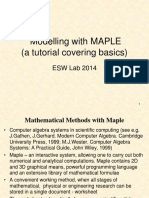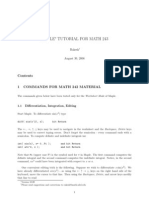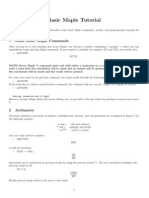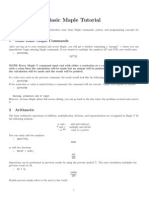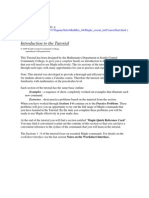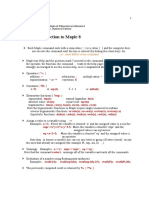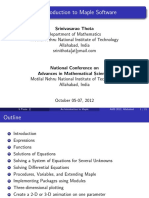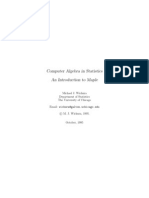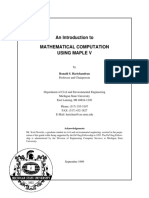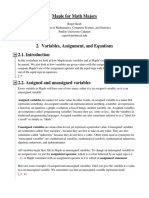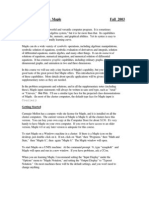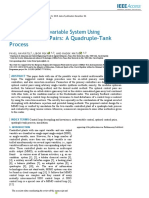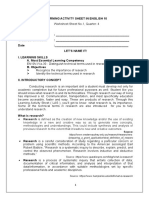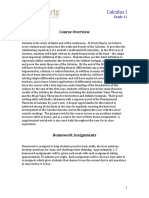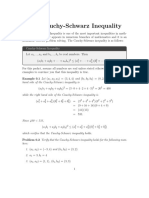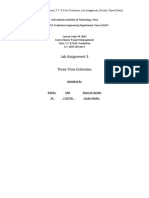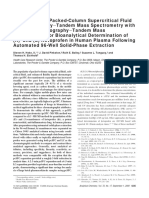0% found this document useful (0 votes)
216 views4 pagesNotes For Maple Math1131
The document provides an overview of key concepts for using Maple including:
1) Different brackets have specific uses such as parentheses for expressions, braces for sets, and brackets for lists.
2) Constants like pi, i, and e can be used and functions are defined using commands like diff and int.
3) Variables are assigned using : = and functions take an input to return an output.
Uploaded by
facosot521Copyright
© © All Rights Reserved
We take content rights seriously. If you suspect this is your content, claim it here.
Available Formats
Download as DOCX, PDF, TXT or read online on Scribd
0% found this document useful (0 votes)
216 views4 pagesNotes For Maple Math1131
The document provides an overview of key concepts for using Maple including:
1) Different brackets have specific uses such as parentheses for expressions, braces for sets, and brackets for lists.
2) Constants like pi, i, and e can be used and functions are defined using commands like diff and int.
3) Variables are assigned using : = and functions take an input to return an output.
Uploaded by
facosot521Copyright
© © All Rights Reserved
We take content rights seriously. If you suspect this is your content, claim it here.
Available Formats
Download as DOCX, PDF, TXT or read online on Scribd
/ 4

